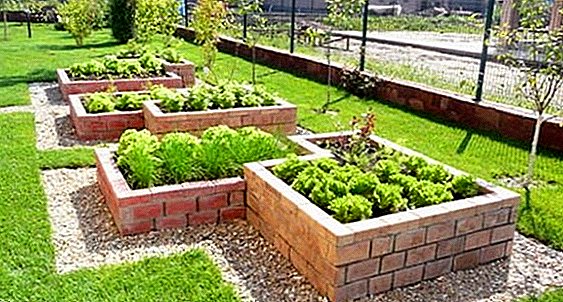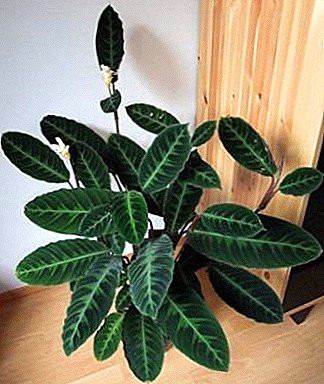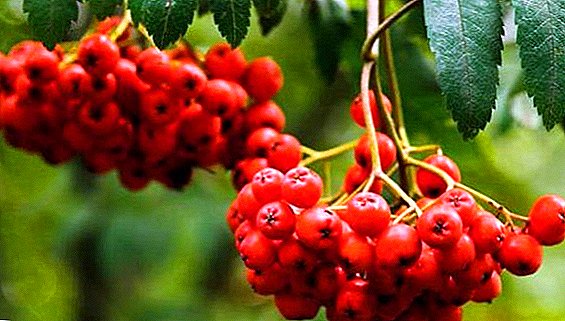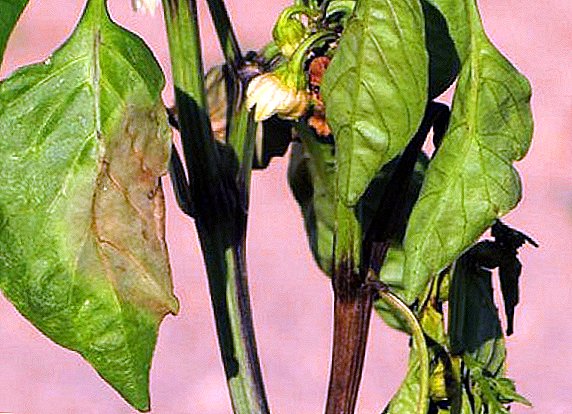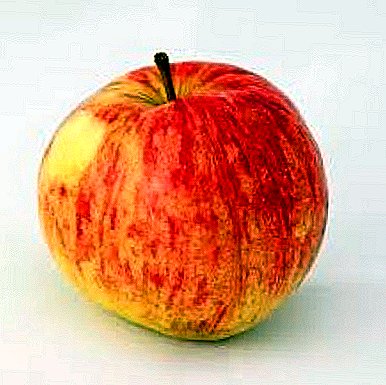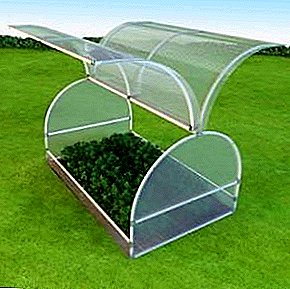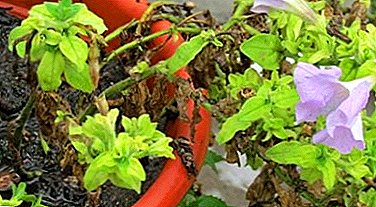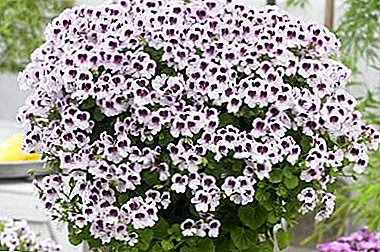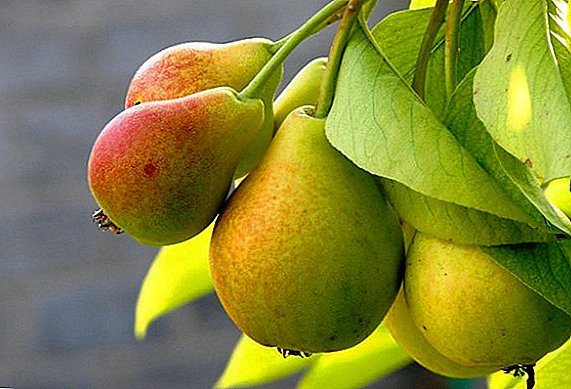 Grafting a pear stalk is an interesting gardening technique, with the help of which you can diversify your garden and your diet, get the opportunity to remove varietal fruits from an ordinary pear or other tree. In the end, it might just be curious to try something new. The reasons may be different, but it does not hurt to study the theory, before embarking on the exciting occupation of breeders - vaccination.
Grafting a pear stalk is an interesting gardening technique, with the help of which you can diversify your garden and your diet, get the opportunity to remove varietal fruits from an ordinary pear or other tree. In the end, it might just be curious to try something new. The reasons may be different, but it does not hurt to study the theory, before embarking on the exciting occupation of breeders - vaccination.
Spring vaccination is most natural for pears, although it can be carried out at other times. With this procedure, you can revive a dying tree, correct the defects of the crown, improve the properties of the plant and the quality of the fruit, and even bring a new culture!
Preparation of cuttings for vaccination
The graft for grafting is harvested ahead of time, since autumn. You can do this in the spring, but the autumn graft is considered to be a better material, since it is impossible to tell from the cutting in the spring whether it survived the winter frost.
Labor will be in vain if the material for the scion has been damaged. Having waited for the end of the leaf fall, the cessation of sap flow and the entry of trees into the resting phase, annual shoots are cut off.
You can combine this procedure with autumn pruning. From the trimmed young twigs cut the cuttings, which are selected for graft. 
Important! For the scion do not use the lower part of the shoot - there the crust is firmer and the sap flow is not as intense. The top also should not be taken - her eyes are not yet fully developed. Suitable middle part of the branch diameter 5-6 mm and a length of 10-15 cm. Scrap contains 3-4 buds that are well developed, the upper cut is located above the kidney.
Cut cuttings form into bundles, bind. Bundles are immersed in a container with wet sand or sawdust, and the container - in the cellar.
Storage temperature should be around 2 ° C. In the absence of a cellar, bundles of cuttings can be stored in the refrigerator, on a shelf on the door, wrapped in a damp cloth and a cellophane bag.
From time to time, the material should be inspected, check the moisture content of the substrate and moisten it as needed. If the cuttings are stored in the refrigerator, when it is thawed, they should be taken care of and transferred to this time in a place with an appropriate temperature. 
Did you know? Pear - South Asian native. Many thousands of years ago, it came from there to Europe, and to the American continents - only 4 centuries ago.
What trees can a pear be planted on
The most natural is grafting a pear stalk. on pear treegrown in this climate.
Important! It is better to use semi-cultural varieties like "Severyanka", "Svetlyanka", "Tonkovetki." The hybrid imparted to the Ussuri pear will have high winter-resistance, however, to get it, you will have to try - not every cultivar takes root well on this stock.
However, everything is much more complicated or simpler, depending on how you look at it. There are a variety of options, including exotic ones, with the help of which you can add novelty to your garden and make it sturdier.
What else can a pear be grafted in so that the graft takes root and bears fruit?
- Graft grafting is considered ideal. pears on a pear-game or an apple-tree. The peculiarity of this option is that you should not use a ready-made wild tree - the hybrid will not live long and its fruiting will not differ in abundance. The stem should be planted on the tree itself grown from the seeds of wild fruits, then the hybrid will be able to develop fully, will live long and bear fruit abundantly.
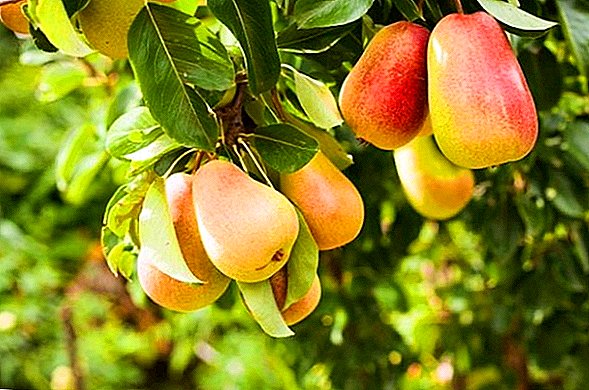
- Grafting pears in spring on the cultivated apple tree - classics of the genre: being trees of the same species, they have the same development time. With this option, the result is consistently successful, which proves the widespread presence of pear-apple trees in the gardens of amateur breeders.
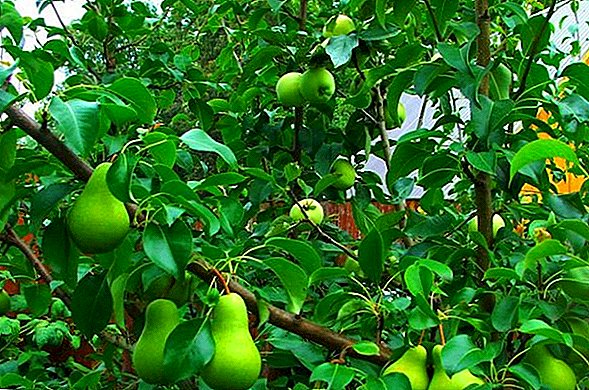
- Quince tree It is also widely used as a stock, but there are some special features. Being a southern plant, the quince does not differ in special frost resistance. Fruiting such a hybrid will not be very long, but it will be early. The tree is small, it can be attributed to the positive sides of a similar experiment. It should be borne in mind that only some pear varieties are attached to the quince.
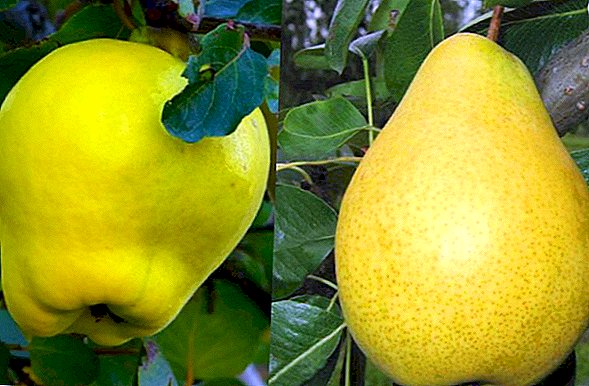
Did you know? Pear wood is very durable and retains its shape and shape for centuries. It is suitable for the manufacture of durable furniture, musical instruments, high-strength rulers for engineers, dishes that can withstand washing in the dishwasher.
- Pear will feel good on dogwood and It will give excellent quality fruit. Two types of wood grow well.
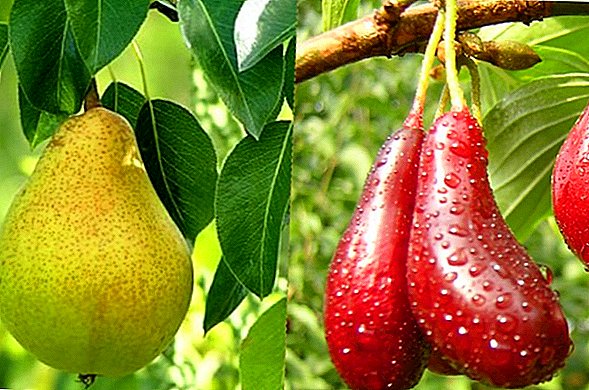
- Rowan as a stock can well be considered, but there are a number of features. Pear tree thickening occurs much faster than the rowan tree, and the grafted branch will become too thick in a few years compared to its mother-trunk. The quality of the fruit also changes over time, adopting dryness, acid, and astringency from mountain ash.
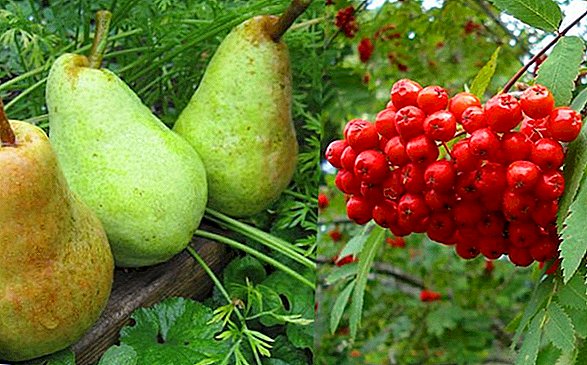
- Due to the difference in the trunks, the same problems will arise with the graft on irgu. In addition, the life expectancy of such a hybrid is small.
- Aronia will give the same problem with the difference of trunks, besides the varieties will only get dwarf.
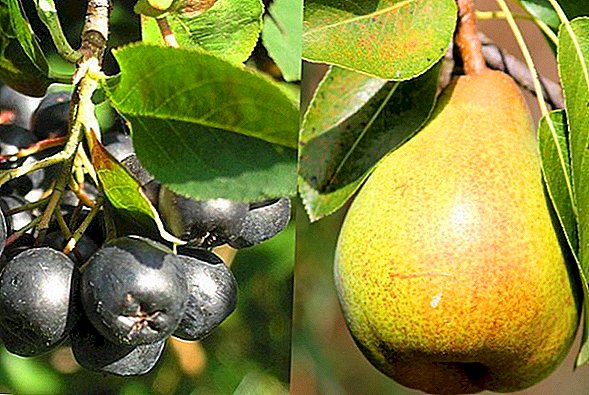
You will probably be interested in reading about grape grafting.
Methods and timing of vaccinations
The generic name "grafting" means the increment of one plant to another. Various technologies are used for this.
It is considered that it is more correct to inoculate a pear in the spring, since the autumn grafting with the tenderness of a pear tree has a chance not to settle down due to the winter cold. For the sake of justice, it is worth noting that autumn and even summer vaccinations are actively practiced by both amateurs and professionals.
Did you know? The Chinese pear - a symbol of immortality, probably due to the strength of wood. However, they also consider its fruit a symbol of separation. Greeks and Romans bore pear fruit as a gift to the goddesses of love - Aphrodite and Venus, as well as home and motherhood - Hera and Juno.
The technology chosen for vaccination timing is very important:
- Budding. For grafting, a sleeping or awakening eye is used. You can spend the spring and summer, starting in May and ending in September.

- Copulation. Splicing cuttings of the same diameter. It is practiced when sap flow is about to begin or is about to begin, in March or April.

- Stalk in cleft. Can be made with a different diameter of the scion and rootstock. Terms are the same as for copulation.

- Shank in the side cut. Used for thin grafts and large stock. It is held in April before the circulation of the juice.
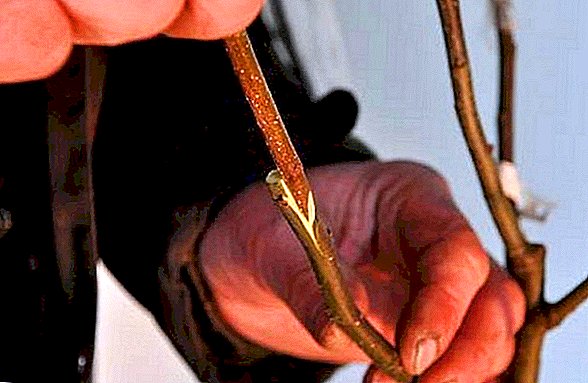
- Shank behind the bark. The most common and used method, characterized by high survival rate. It makes sense to apply only when the movement of juice begins, in April and May.

- By the bridge Used when a wound needs to be healed - no bark in a wide area. It is held in May and June, when the juice is actively circulating.

- Interlacing. The technology of convergence of two adjacent branches. Effective during active sap flow from May to September or October.
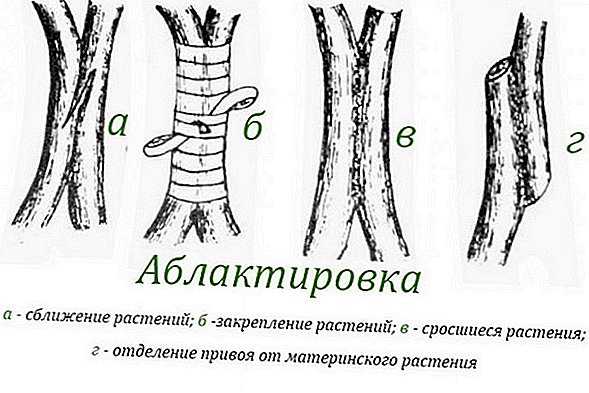
Learn more about such the most delicious pear varieties according to gardeners' reviews like "In memory of Yakovlev", "Duchess", "Moskvichka", "Just Maria", "Avgustovskaya dew", "Veles".
Spring grafting of pears over the bark: step-by-step instruction
Most often, because of the simplicity of performance, reliability and high survival rate, both amateur and professional gardeners use the method of grafting cuttings for bark. Consider how to plant a pear in the spring, step by step.
Necessary tools and materials
It should be noted that the grafting procedure can be started only when everything necessary is prepared.
Important! Careless approach to the business of selection is unprofessional. It is unacceptable to neglect the availability of the necessary materials and tools, as well as their quality. This can nullify all efforts and give a negative or unsatisfactory result.
 So, by the time the vaccination procedure begins, it is necessary to have:
So, by the time the vaccination procedure begins, it is necessary to have:- cutting, stored or cut in accordance with the rules;
- very sharp, and better - a special grafting knife;
- maximum thin and sharp hacksaw;
- sharp with a thin ax blade;
- garden pitch, plasticine or oil paint;
- grafting or insulating tape;
- plastic bag and twine or scotch.
Preparation of cuttings
A day before the vaccination, cuttings should be brought into the room, then soak for half an hour in Epin or another stimulator, or simply in water. Recall that each of them must have 3 or 4 developed buds.
On one or more blanks should be checked ease of separation of bark from wood.  At each knot at the junction with the stock, oblique cut (25-30 °) is made with a hacksaw, which must be cleaned with a sharp knife to a smooth surface. The upper flat cut should also be updated.
At each knot at the junction with the stock, oblique cut (25-30 °) is made with a hacksaw, which must be cleaned with a sharp knife to a smooth surface. The upper flat cut should also be updated.
Preparation of stock
On the stock, you should carefully inspect the place of the proposed vaccination. The bark should be healthy, without damage. The stock size is 3.5 cm.
Cut down the upper part of the trunk, cleaned the cut with a sharp knife.
Carefully incise the bark along 4-5 cm so that its upper layer is easily separated, and the wood was not damaged. 
Fastening cutting
Carefully pushing the bark away with a knife, insert the prepared cutting for it in such a way that 2-3 mm of the cut remain unburied, press it tightly.
To smear the junction and cut of the scion with garden pitch, wrap with inoculum or insulating tape so that there are no gaps left.
Firmly secure the top of the entire plastic bag: it will protect from wind and rain and maintain the desired level of humidity.
Important! It should be aware that vaccination is akin to surgery, in which cleanliness must be maintained. It is forbidden to touch a fresh cut or put it in your mouth with busy hands. If you accidentally dropped a cutting, you need to cut again. Each speck of dust or a piece of dirt can cause the ungrafted graft.

Further care for vaccinations
The next 2 weeks should be regularly inspected. This time is enough for engraftment and swelling of the kidneys.
If this does not happen, you can try to inoculate in another place of the tree, if there are unused cuttings, or inoculate in another way in suitable time.
Shoots that overlap the food grafted, as well as the leaves that block the light, should be removed in a timely manner.
With the active growth of the grafted shoot, the bandage is weakened in order to avoid the formation of constrictions, and its top is pinched.
The harness is removed at the end of the season, in the fall, and better in the spring, after the plant overwinters and the snow melts. 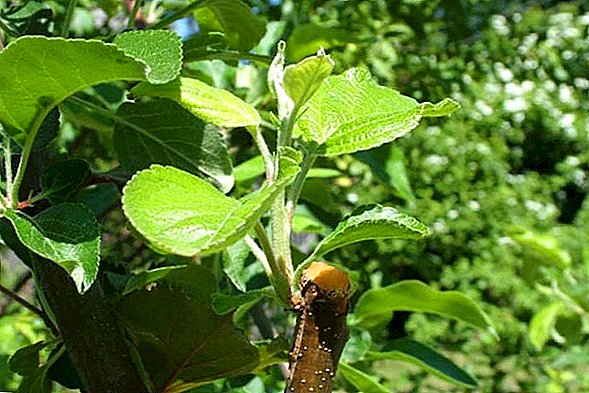
Frequent mistakes
Despite the fact that, with proper theoretical and practical training, vaccination is not such an impossible task even for a beginner, errors that experienced gardeners can make:
- blunt tools;
- dirty tools;
- containing gaps or loose dressings;
- careless application of Vara on cuts;
- the use of frost-bitten, rotted or dried cuttings;
- immature or full-blown buds on a graft;
- inoculation of the seed tree on the stone and vice versa;
- grafting of late varieties on early ripening trees and vice versa.
In fruit growing, grafting is a very important process by which many goals can be achieved: bring a new or preserve a rare variety, prolong the life of old trees, heal wounds on a tree, change and improve the quality of fruits, and much more.
Grafting pears in the spring is a popular method among professionals; it is also suitable for novice gardeners interested in gardening and seeking to achieve success in this field.















